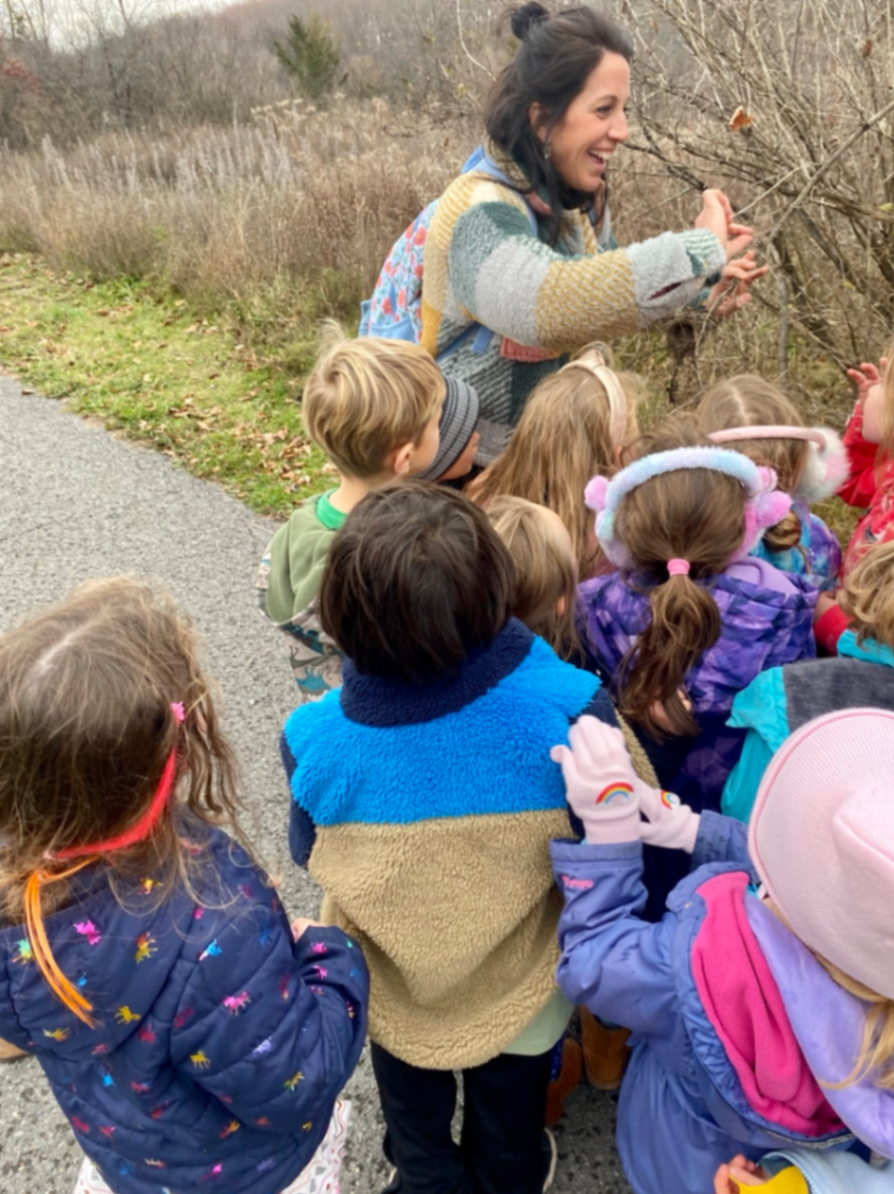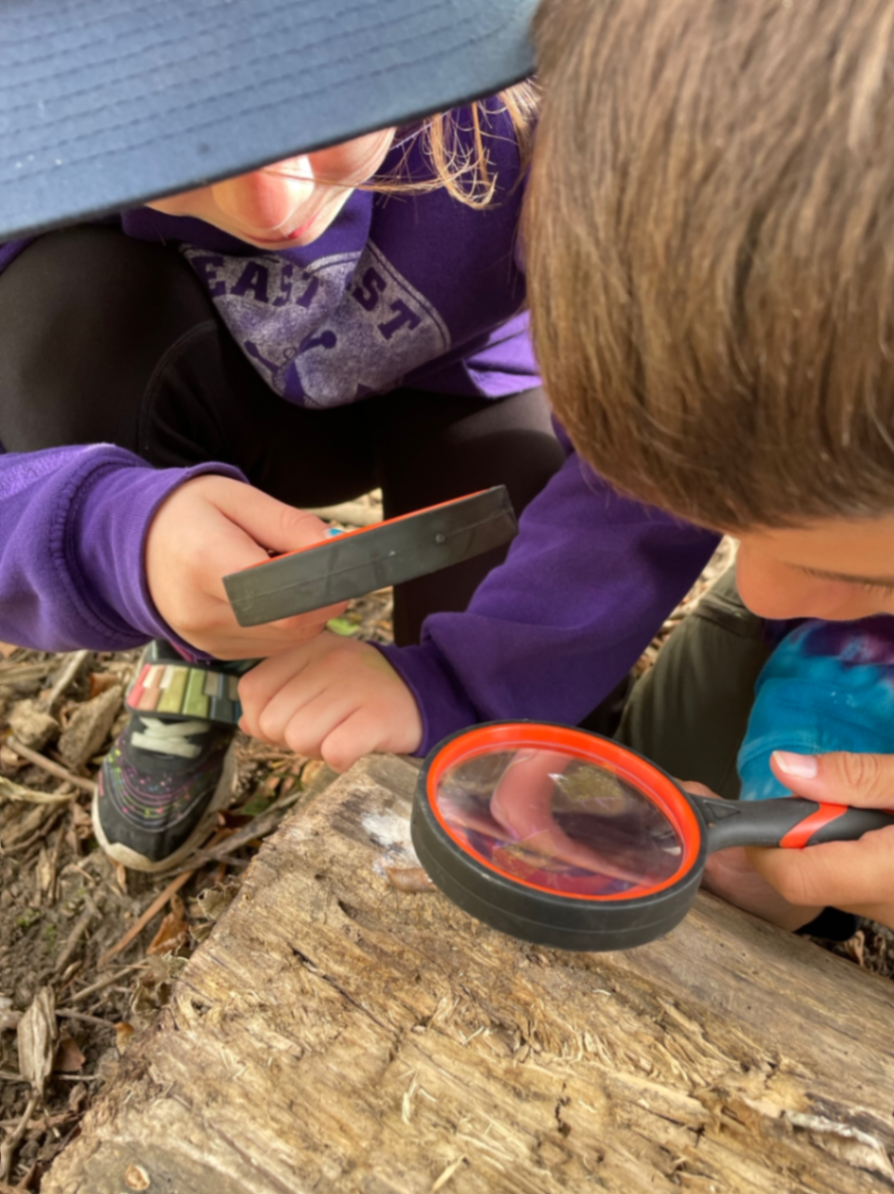What is the Land-Based Education Program?
The Elementary Indigenous Land-Based Education Program is rooted in the natural cycles of the seasons and guided by the 13 Grandmother Moons and the 4Rs of Indigenous Land-Based Education:
- Relationships (fall)
- Respect (winter)
- Reciprocity (spring)
- Responsibility (summer)
Throughout the school year, students and their teachers spend one week each season learning on the land alongside the Elementary Indigenous Land-Based Teacher.
As Dr. Robin Wall Kimmerer reminds us in Braiding Sweetgrass, land-based learning invites us to “remember another way of being in the world. In kinship. To be in a relationship with all living beings, our relatives. That plants and animals can be our caretakers, our healers, our teachers, and our guides.”
Core Features of the Land-Based Education Program
- Learning cycles follow the 13 Grandmother Moons and seasonal teachings.
- Indigenous pedagogies are centered, with opportunities for students to engage in ceremony, storytelling, and hands-on activities.
- Teachings are connected to Haudenosaunee and Anishinaabek worldviews through collaboration with local Elders, Knowledge Keepers, and Cultural Facilitators, integrating Indigenous knowledges with Ontario curriculum expectations.
- Students and teachers spend extended time learning outdoors, building connections to the land, waters, and all living beings.
- A holistic focus on spiritual, emotional, mental, and physical well-being is woven into all activities.
Seasonal Themes and Learning
Fall – Relationships
- Building relationships with the land, plants, animals, and each other.
- Exploring the Haudenosaunee Creation Story of Turtle Island.
- Activities include land-based games, sit spots, nature journaling, and creating nature bundles.
- Seasonal teachings: Harvest, Anishinaabek Moose Calling Moon, Anishinaabek Falling Leaves Moon.
Winter – Respect
- Honouring respect for oneself, others, and the land.
- In the quiet of the Anishinaabek Spirit Moons, students discover their inner light.
- Activities include fire-making, storytelling, and reflection practices.
Spring – Reciprocity
- Learning about reciprocity during the Haudenosaunee Maple, Anishinaabek Frog, and Anishinaabek Budding Moons.
- Celebrating new life and growth.
- Introducing Etuaptmumk (Two-Eyed Seeing) through teachings of the dandelion, viewing the world through both Indigenous and Western perspectives.
Summer – Responsibility
- Reflecting on responsibilities to the land, waters, and future generations.
- Celebrations include the Summer Solstice, National Indigenous Peoples Day, and the Anishinaabek and Haudenosaunee Strawberry Moon.
- Students consider the footprints they leave behind and their responsibilities to the next seven generations.
Who is a Candidate for the Program?
This program is designed for elementary students who would benefit from:
- Experiential and land-based learning guided by Indigenous teachings.
- A deeper connection to the cycles of nature and seasonal responsibilities.
- Opportunities to learn through Indigenous pedagogies alongside classroom curriculum.
- Relationship-focused, culturally grounded learning experiences that support identity, belonging, and well-being.
Understanding Our Responsibilities
The Elementary Indigenous Land-Based Education Program is guided by the understanding that we are all in relationship with the land and with each other. Students are encouraged to carry forward the teachings of relationship, respect, reciprocity, and responsibility in their daily lives, both at school and in their communities.
This program is a unique opportunity to engage with Indigenous knowledge systems while strengthening student well-being, cultural awareness, and environmental stewardship.
Kindergarten Registration
Discover Kindergarten in Limestone and register your student for the 2026-2027 school year today!




